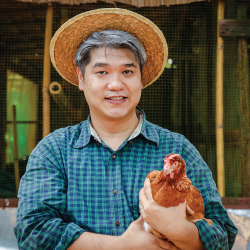From A Growing Culture:
“I—like many others—believed for a long time that industrial agriculture [is] a necessary evil, an unfortunate requirement given how many people now live on the planet. Once I learned about the importance of small-scale farming for biodiversity and cultural preservation, I still wondered whether these smaller farms would be able to “feed the world…”
There is ongoing controversy about exactly what percentage of the world’s food is produced by small-scale and peasant farmers. It’s a difficult question to answer, but an incredibly important one. If it turns out that small-scale agriculture does, in fact, feed the majority of the world, then that would be a huge blow to the industrial agricultural system, given its widespread environmental and social harms. In recent years, researchers have attempted to answer this question. But a couple of key studies have emerged, pointing us in the wrong direction, and creating dire consequences for policy-making. Let’s dive in.
Back in 2009, ETC Group published a report titled Who Will Feed Us? in which they cite the statistic that small-scale farmers feed 70 percent of the world (that is, they produce 70 percent of the food that actually goes to feeding people, vs. crops that are diverted for biofuels, animal feed, or other non-food uses). This distinction is important—they aren’t claiming that smallholder farmers produce 70 percent of net calories, but 70 percent of the food that ends up being consumed by people.
They assert, based on available data, that 50 percent of global crop production for human consumption can be attributed to small-scale farms under 5 hectares [or 12 acres] (this is relatively uncontroversial in the research). Then, they added in food resulting from practices like hunting and gathering, fishing, pastoralism, as well as small-scale urban and peri-urban food production, which accounted for an additional 20 percent of food consumed. These forms of food production are mostly informal—and chronically undervalued—so it’s difficult to ascertain exact figures, but they are nonetheless important ways that people feed themselves around the world.
In the past few years, two papers have been published that attempt to ‘debunk’ this 70 percent statistic. The two papers, published by Vincent Ricciardi et al. (2018) and Sarah Lowder et al. (2021), both claim that small-scale farmers account for just 30 percent of global food production—quite a jump down from 70 percent. This has led to a slew of headlines implying that these findings prove that small-scale agriculture is inefficient and incapable of feeding the world and that we should invest in industrialized methods instead. As a result of these papers, the UN’s Food and Agriculture Organization (FAO) has shifted its position from 70 to 30 percent, despite the fact that the papers are full of methodological errors and assumptions that warrant further scrutiny before being universally accepted.”

